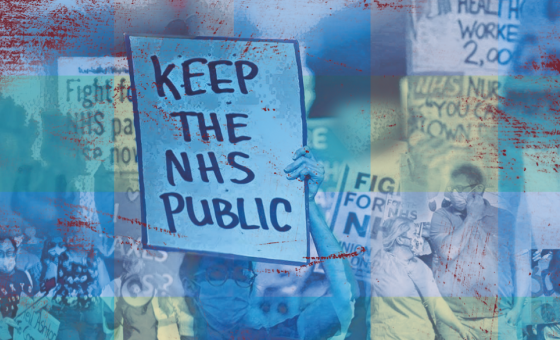This is the last article you can read this month
You can read more article this month
You can read more articles this month
Sorry your limit is up for this month
Reset on:
Please help support the Morning Star by subscribing here
Time to Think
Hannah Barnes, Swift Press, £20
“ARE we hurting children?” is the question that lies at the heart of this timely and meticulously researched investigation into the medical scandal at the Tavistock and Portman Trust’s Gender Identity Development Service (GIDS).
The service opened in 1989 to provide talking therapies to young people struggling with their gender identity. Treatment initially consisted of careful and lengthy exploration of the issues and family counselling in a supportive setting. It involved small numbers of patients, mainly boys, who exhibited gender incongruence before puberty. Most of these boys desisted and grew up to be gay.
By the time of the announcement of the clinic’s closure last year, the number of young people being treated had skyrocketed into the thousands; the vast majority, representing a rise of over 4,000 per cent, were now teenage girls exhibiting extreme distress and complex problems.
For many of these girls “gender” was just one issue among many including autism, depression, self-harm and histories of trauma and abuse. Moreover, many of these girls had no history of pre-pubertal gender dysphoria; on the contrary, their problems emerged with puberty, suggesting that for some girls at least, gender transition offered a route out of unwanted sexual attention and sexist treatment associated with being an adolescent female.
A majority of them were also same-sex attracted, which raises the question of why a generation of young people weren’t being supported to live happy and fulfilled lives as lesbians.
The book’s title derives from the idea that the service would provide young people with “time to think.” This time was intended to be spent in therapeutic exploration of their problems relating to gender identity and, if appropriate, to lead to a referral for puberty blockers, which by “pausing” puberty, was supposed to provide space and time to reflect.
However, as the service grew and got more stretched, the time spent on exploration declined and the pressure to refer patients on for blockers grew more intense. In addition, far from offering a breathing space, it transpires that virtually all patients went on to take cross-sex hormones, thereby “fixing” rather than opening up treatment pathways.
Moreover, despite claims, based on limited data, that puberty blockers were “fully reversible,” evidence was emerging that blockers were not be as risk-free and treatment-neutral as was thought and may be linked to stunted physical growth, decreasing bone density and having implications for brain development among other concerns.
The book is interspersed with the stories of former patients, which movingly present the human cost of these clinical decisions.
One of these, Jacob, went to the service as a male-identifying girl in need of help coping with the distress of puberty. While Jacob never asked about puberty blockers, they were mentioned early on and, seemingly, this was the only treatment on offer leaving Jacob’s wider problems unaddressed. Jacob was put on blockers aged 12 and stayed on them for four years. During that time, his mental health got worse, his bones started breaking, and he put on weight.
It was only when he was told he’d have to stay on blockers if he wanted to progress to cross-sex hormones that he found the courage to come off them and immediately started feeling better. Jacob still identifies as male but takes no medication and for the time being feels content. However, he worries about the impact of four years of blockers on his body. Shockingly, after he was discharged, GIDs never contacted him to follow up on the state of his health.
As the book carefully documents, GIDS faced assorted pressures — of time, money, lobbying by trans charities and the demands of patients themselves who were in turn influenced by groups and influencers on social media.
Stonewall, Mermaids and Gendered Intelligence are accused of driving an ideological agenda that constantly pressurised practitioners to pursue physical intervention and speed up referrals. One former clinician comments that the GIDS leadership didn’t want to upset the lobby groups for fear of a backlash.
Financial pressures also play an important part in the story: in the context of widespread cuts to NHS services, GIDS seemed to be a success; independently funded by NHS England, it accounted for about 25 per cent of the Trust’s income owing to its lucrative hospital referrals.
Eventually, as Barnes details, some of its staff felt as if the service had become like a factory conveyor belt sending children at ever younger ages to the endocrine clinic at UCLH for medical intervention. Several interviewees were concerned that gender wasn’t the only or main issue for some young people referred on to GIDS by overstretched CAMHS services. As one former staff member comments, “gender is so low down the pecking order of problems but what can you do?”
Barnes is nevertheless keen to emphasise the fact that GIDS staff were dedicated professionals who were trying to do the best for their patients under increasingly challenging circumstances. Many of those interviewed said that they repeatedly raised concerns about the ethics of what they were doing and were listened to but that action to address the problems was never taken.
The book highlights the courage of Tavistock insiders like Dr David Bell and Sonia Appleby who went public with their concerns, and a host of outsiders, such as the sociologist Michael Biggs and feminist campaigner Stephanie Davies-Arai, who get a mention; along with many feminist groups, parents and others who persistently raised the alarm about the service’s shortcomings, who don’t.
It also covers the publication of the interim Cass review in March 2022, which recommended closure and the complete reorganisation of gender services for young people. Cass has stipulated that there must be essential related services in place to address in a holistic way the mental health needs of children with autism and other conditions.
Overall, Barnes concludes that GIDS, well-meaning and committed as it was in many ways, ultimately failed to act once the risks attendant on the medicalisation of its gender affirmation model came to light. In the process it harmed those young people for whom gender incongruence was almost certainly a transitory phase in their lives.
For anyone with an interest in the vexed history of treatment of gender dysphoria in children as well as the wider issue of young people’s mental health, this compelling account of how NHS services faltered under the strain of meeting their needs is well worth reading.










